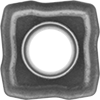Filter by
Drill Bit Size
For Use On
System of Measurement
Length Class
Decimal Size Equivalent
Material
Drill Bit Point Type
Finish
Shank Size
Overall Length
Shank Type
Flute Direction
Sold As
DFARS Specialty Metals
Export Control Classification Number (ECCN)
Screw Size
About Drill Bits
Compare material, finish, length class, and decimal size equivalents.
Drill Bits
Sold Individually
Sold as Sets
Other Products

Chisel Bits
Pair with powered hammers or needle scalers to chip material off of workpieces
18 products

Drill Bit Sharpeners
Sharpen steel, high-speed steel, cobalt steel, and carbide spiral bits
6 products

Drill/Screwdriver Bits
Quickly change between drilling countersunk holes and driving screws
6 products










































































































































































